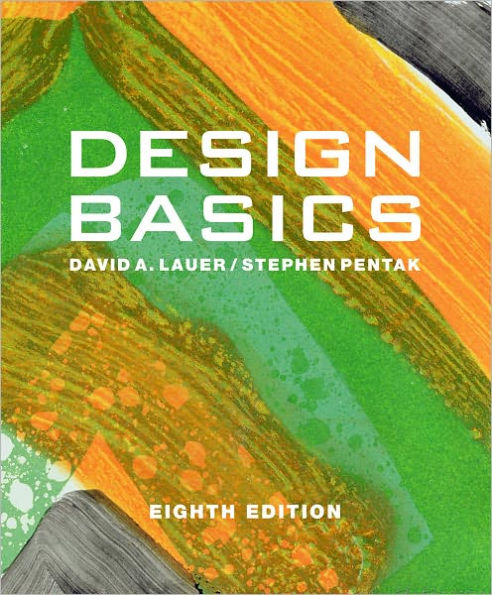The dictionary goes on to give sixteen more definitions and usages for the word "design." Obviously this common word has many applications. But in all of these definitions there is one common element: the word "plan" appears over and over. To design indeed means to plan, to organize (A). Design is essentially the opposite of chance. In ordinary conversation, when we say "it happened by design" we mean something was planned and did not occur just by accident. People in all occupations plan, but the artist or designer is someone who plans the arrangement of elements to form a visual pattern. Depending on the field, these "elements" will vary-all the way from painted symbols to written words to scenic flats to bowls to furniture to windows and doors. But the result is always a visual organization. Art, like other careers and occupations, is concerned with seeking answers to problems. Art, however, seeks visual solutions in what is often called the design process.
The arts are called "creative" fields because there are no predetermined correct answers to the problems. Infinite variations in individual interpretations and applications are possible. Problems in art vary in specifics and complexity and take various forms. Independent painters or sculptors usually create their own problems or avenues they wish to explore. These may be as wide or as narrow as the artist chooses. The architect or graphic and industrial designer is usually given the problem, often with very specific options and clearly defined limitations. Students in art classes also usually are in this category-they execute a series of assignments devised by theinstructor and requiring rather specific solutions. However, all art or visual problems are similar in that a creative solution is desired.
We use the word "creative" to mean a solution that is original, imaginative, fresh, or unusual. The poster in B is a wonderful expression of the creative approach. It is a simple design that graphically shows an important idea. Knowing how to do something is not necessarily the essential factor: it is knowing what to do. The ability to know what to reject (or erase) is as important as simply having the talent to create something. The circular pencil shows that both its ends are vital to this design process.
The creative aspect of art also includes the often-heard phrase that "there are no rules in art." This is true. In solving problems visually, there is no list of strict or absolute dos and don'ts to follow. Given all the varied objectives of visual art through the ages, definite laws are impossible. However, the "no rules" phrase may seem to imply that all designs are equally valid and visually successful. This is not true. Artistic practices and criteria have been developed from successful works, of which an artist or designer should be aware. Thus, guidelines (not rules) exist that usually will assist in the crea- tion of successful designs. These guidelines certainly do not mean that the artist is limited to any specific solution.
Discussions of art often distinguish between two aspects, content and form. Content implies the subject matter, story, or information that the artwork seeks to communicate to the viewer. Form is the purely visual aspect, the manipulation of the various elements and principles of design. Content is what artists want to say; form is how they say it. Problems in art can concern one or both categories.
Sometimes the aim of a work of art is purely aesthetic. Subject matter can be absent and the problem related only to creating visual pleasure. Purely abstract adornment or decoration is a very legitimate role in art. Very often, however, problems in art have a purpose beyond mere visual satisfaction. Art is, and always has been, a means of visual communication.





